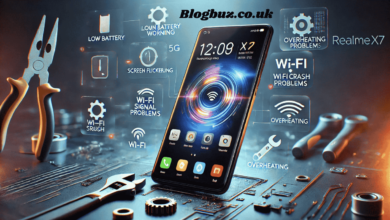I Asked the Same Prompt to 6 AI Models – Here’s Why I Use Chatronix Now

Most people still use just one AI tool. I don’t. Because the moment I sent the same exact prompt to ChatGPT, Claude, Gemini, Grok, Perplexity, and Mistral, the differences were impossible to ignore.
It started with a single question:
“Build a 7-day email sequence for a productivity app targeting freelancers. Make it persuasive, human, and conversion-focused.”
Simple prompt. Wildly different results.
Here’s exactly what I tested, what shocked me about the outputs – and why I now run every important task through Chatronix instead of guessing which AI to trust.
How ChatGPT, Claude, and Gemini Each Handled the Prompt
ChatGPT: Creative but Repetitive
OpenAI’s flagship model was fast and polished. But it over-indexed on structure and tone. Every email sounded like a HubSpot template. Clear CTAs, yes – but no soul.
What it did well:
- Sharp formatting
- Clear segmentation
- Easy to adapt for sales
What it missed:
- Emotional nuance
- Audience-specific pain points
- Natural variation between days
Claude: Human Voice, But Less Focused
Claude by Anthropic impressed me. Its tone felt written, not generated. Day 2 and Day 5 of the email sequence felt like an actual copywriter stepped in.
But it sometimes rambled or overexplained. The CTA came in paragraph six – or not at all.
What it did well:
- Deep emotional tone
- Felt like storytelling
- Good for brand voice
What it missed:
- Sales focus
- CTA clarity
- Formatting speed
Gemini: Useful but Shallow
Gemini was the fastest. It drafted all seven emails in under 6 seconds. But it leaned too much on facts, not persuasion.
What it did well:
- Great with structure
- Snappy sentences
- Solid bullet lists
What it missed:
- Buyer psychology
- Creativity
- Voice
Then I Tried Grok, Perplexity, and Mistral – Here’s the Twist
Grok (by xAI): Surprising insights, inconsistent tone
Grok added a unique layer of strategy. One of its emails had this line:
“Your time isn’t just money. It’s dignity.”
That’s smart. But then it followed with robotic transitions like “Here’s why productivity tools matter in 2025.”
Great raw ideas. Still not production-ready.
Perplexity: Fastest research, weakest copy
Perplexity is amazing at finding data-backed insights, but poor at writing. It gave me stat-rich intros for each email – with zero actual conversion hooks.
Example:
“Studies show freelancers lose 12 hours a week to untracked tasks.”
Great. Now turn that into a hook. Perplexity didn’t.
Mistral: Technical tone, coder energy
Mistral generated emails like API docs. Crisp, functional, but emotionless. If your product is for developers, it might work. For freelancers? Cold.
Why I Rely on Chatronix to Compare Models Side-by-Side
After testing all six models, here’s what I realized:
No single AI is great at everything. But using the right AI for the right sub-task is 10x more effective.
That’s why I moved all serious prompt work into Chatronix, the AI dashboard where I can:
- Run the same prompt across GPT-4, Claude, Gemini, Grok, DeepSeek, and Perplexity
- See the outputs side-by-side instantly
- Rephrase, tag, and save the best responses
- Use the turbo mode when I want all six models to collaborate (this is wild)
Most importantly: it cuts my decision time by 80%.
I no longer guess if Claude will be more creative or if GPT will be sharper. I just test them – fast.
If you’re still switching tabs between AI platforms or paying for multiple subscriptions, All-in-one AI assistant platform fixes that in one interface.
Table: Which Model Is Best for Each Use Case
| Use Case | Best AI Model | Why |
| Storytelling Emails | Claude | Emotionally rich, human voice |
| Sales CTAs | ChatGPT | Direct, clear, highly structured |
| Research & Insights | Perplexity | Pulls current data fast |
| Developer Comms | Mistral | Precise, tech-focused copy |
| Multimodal Projects | Gemini | Combines structure with visuals |
| Unfiltered Ideas | Grok | Creative, sometimes weirdly honest |
The Prompt Stack That Helped Me Close $15K In Deals
Here’s what I now use when building any AI-assisted copy sequence:
1. Strategy Prompt (Claude)
“Act like a senior brand strategist. Write a 3-paragraph positioning guide for this product: [insert brief].”
2. Structure Prompt (ChatGPT)
“Now create a 7-part email sequence with subject lines, CTA buttons, and persuasive transitions.”
3. Fact Check (Perplexity)
“Pull 3 recent stats on freelance productivity losses. Add source links.”
4. Voice Test (Gemini)
“Rewrite email 2 to match a friendly, Gen Z tone. Include emojis.”
5. Final Polish (Claude or GPT)
“Make this email sound like a founder wrote it. Direct but warm.”
This entire flow happens inside Chatronix. No switching tabs. No double subscriptions. Just fast results.
Bonus Prompt: Try This to Test All AIs at Once
Copy-paste this into AI multi tool (or adapt for your tool):
“Write a short email promoting a 5-day challenge to help freelancers reclaim 10+ hours of time per week. Include urgency, emotion, and a strong CTA.”
Run it across all 6 models. Compare. You’ll see why one tool alone is not enough anymore.
<blockquote class=”twitter-tweet”><p lang=”en” dir=”ltr”>ChatGPT – Cheat Sheet <a href=”https://t.co/jjojwstZ78″>pic.twitter.com/jjojwstZ78</a></p>— Book Therapy (@Book_therapy223) <a href=”https://twitter.com/Book_therapy223/status/1943568439022424162?ref_src=twsrc%5Etfw”>July 11, 2025</a></blockquote> <script async src=”https://platform.twitter.com/widgets.js” charset=”utf-8″></script>
Final Thought: Why Multi-AI Strategy Beats Blind Loyalty
Most people still treat AI like a monogamous relationship. Pick one model. Hope it works.
But the pros? They treat AI like a team of specialists.
GPT for structure. Claude for tone. Gemini for speed. Grok for insights.
And Chatronix is where those specialists work together.
Want to try it? Use Chatronix.ai to test this exact stack – and stop wasting time guessing.




